The Flash #21 releases those comic-book endorphins.
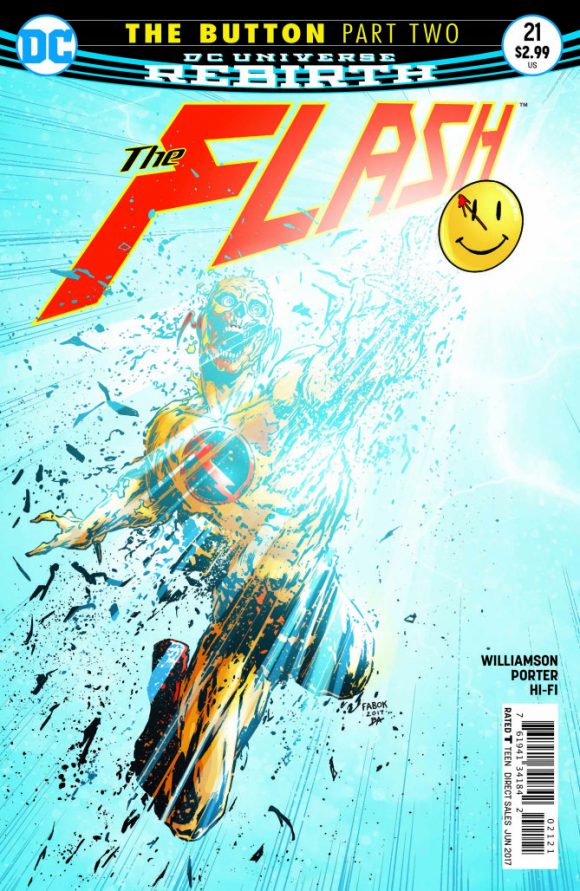
The Button, the four-issue Batman/Flash crossover, is kind of a big deal. It’s the first real road stop on the journey toward an inevitable meeting between the DC Universe proper and the world of Watchmen since the release of last spring’s DC Universe Rebirth special.
We’re at the halfway point of The Button and there’s a lot to recommend the story so far, with teases and character moments aplenty. I’m kind of holding fire until the last part runs in The Flash #22 in May, but there’s something that popped up this week in Part 2 that bears mentioning now.
In The Flash #21, by Joshua Williamson with art by Howard Porter and Hi-Fi, the Flash hops onto a dormant cosmic treadmill and Batman tags along for the ride. That alone was enough of a kick but it’s what they saw as they zipped through space-time — and how the Flash analyzed it — that made me sit forward on the couch:
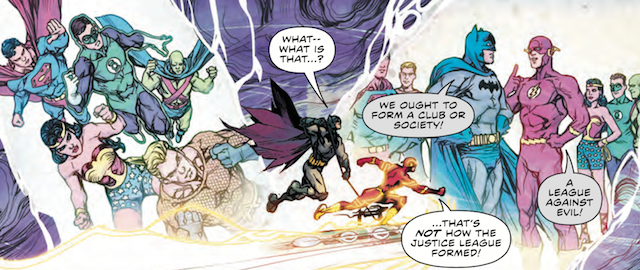
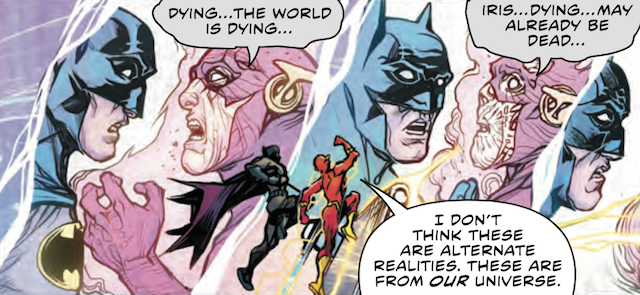

Earth-One is here.
And has always been here. New Earth? Earth-0? Post-Crisis Earth? Whatever you want to call the main DC Earth now? It’s the same Earth as the one that existed when Gardner Fox and Julius Schwartz and co. devised the Multiverse waaaaaay back in The Flash #123 in 1961. At least that’s my reading of it.
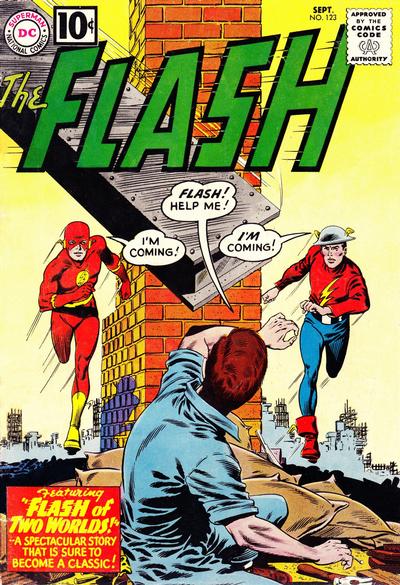
Now, I completely get that this is a pedantic point to make but it’s one worth making nonetheless. DC has been getting alternately praised and strafed for more than 30 years for redoing and undoing and redoing and undoing its cosmic canon: From Crisis on Infinite Earths to Zero Hour to Infinite Crisis to Flashpoint/New 52 and the many touch-ups in between, DC has risked or engendered the ire of longtime fans by telling them “Everything you know is wrong” or “The past never existed” or some variation.
Now, however, Batman and the Flash are learning what we fans have known in a meta way: It all happened. It’s just that cosmic forces — what you and I would call writers and editors — keep changing the DC Universe and the lives of its heroes and villains. The characters may not remember everything, but that doesn’t mean it didn’t occur.
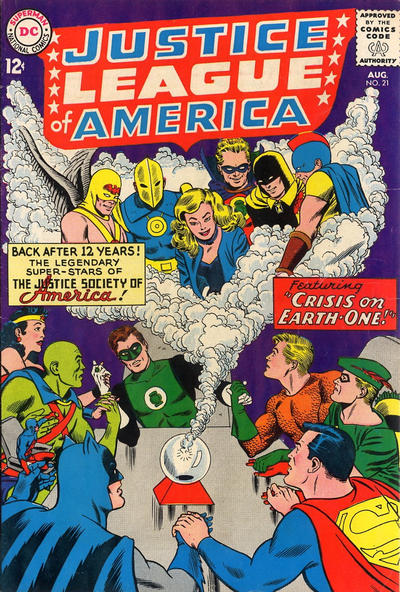
And that’s a startling change — one hinted at in Convergence a couple years ago and the DC Universe Rebirth special last year — that embraces and honors the work of thousands of creators who came before, not to mention the millions of fans who have loved stories that no longer “count.”
There are many details that need to be worked out and I’m not sure how much of an explanation we’re going to get in-story. All the clues point to Dr. Manhattan having something to do with it — and that actually works out nicely when you consider that Watchmen and Crisis on Infinite Earths were published around the same time. Maybe, juuust maybe, it’s all connected. (Then again, maybe I’m way off the mark about all of this and this is a tease about something else entirely.)
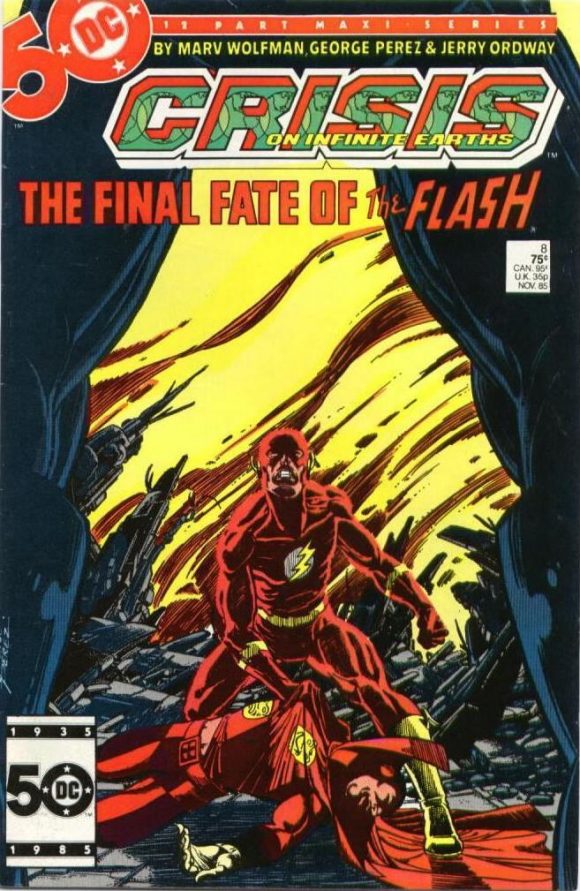
All that said, here’s what I’d like to see: A new DC timeline that in effect adheres to the timeline of real life. For example, Superman first burst onto the scene in 1938, followed by Batman, Wonder Woman, the Flash and so on. A series of ripples through spacetime, perhaps (or not) caused by Dr. Manhattan, results in a periodic reset of the Multiverse. A sort of stripped-down Hypertime idea. Time brings change but time doesn’t change what happened. Whether our characters can remember it all is secondary.
I hasten to point out — and this column notwithstanding — that when it comes down to it, I don’t care all that much about the intricacies of the Multiverse and the ramifications of DC’s cosmic changes. But I know how important they are to others. As a young ‘un, I was obsessed with such things but now I simply want good stories (which DC Rebirth has been giving us regularly). I love Multiverse stories but I don’t agonize over how it all fits and no amount of editorial fiat can change the warm feelings those comics of the ’60s and ’70s give me.
Nevertheless, I’m downright pleased to see those comics I loved as Young Dan get an official place in the DC Universe once again.

April 28, 2017
So basically…Hypertime is back. Hypertime, the idea that no less than Mark Waid and Grant Morrison devised to say “it all happened”, but really didn’t get to develop much, because executive shifts made it fall out of favor (mainly it was Dan DiDio as I recall).
I’m not complaining, I love the idea of this… but this solution was already there about 15 years ago or so.
The idea that Dr. Manhattan is his own way a meddlesome comic creator who wants to recreate the universe as he sees fit is so meta, I’d almost think Morrison was involved in this somehow.
Chris
April 28, 2017
We still have to see how this plays out, Chris. But that’s certainly how it feels.
April 29, 2017
I’m all for bringing Hypertime back. It appears Marvel is doing their own spin on it. Galactus reveals the nature of spacetime in the Marvel Universe in Ulitmates #5 (2016):
“The present moment — the “now” — hurtles from past to future along a stream of events. And events have weight. Sometimes the weight is vast, sometimes so light as to be undetectable. But some events — those with a unique, peculiar gravity — are caught by the present, dragged in its wake, like planets about the sun.
Always just a handful of years behind…”
If it all happened, in either universe, that’s cool with me.